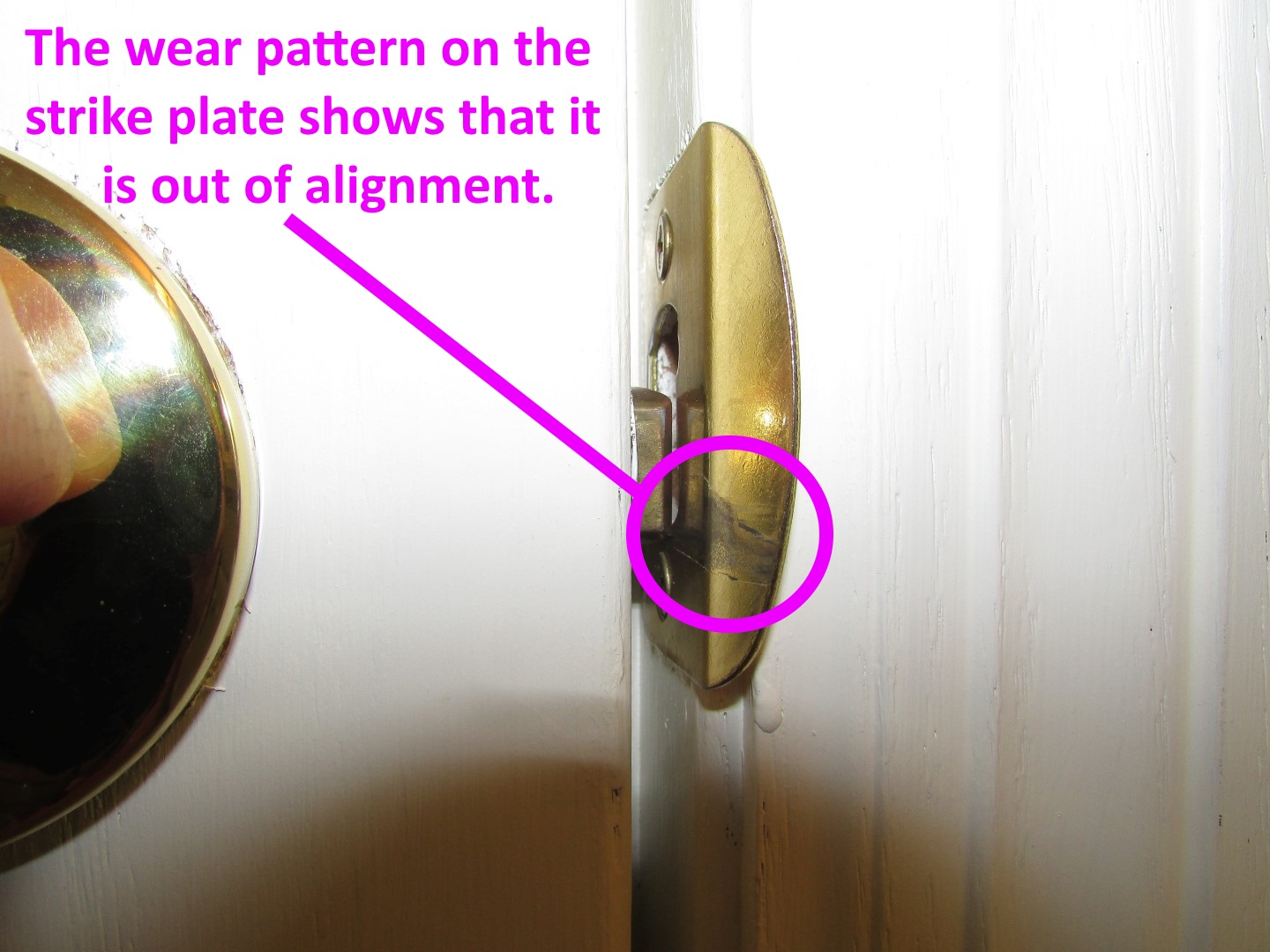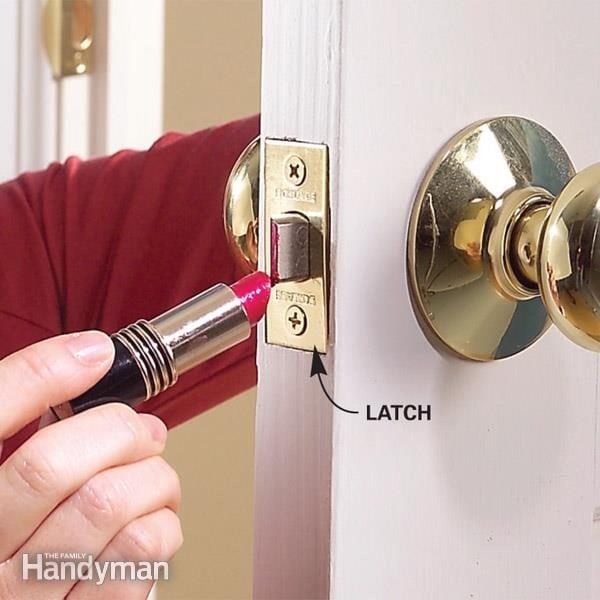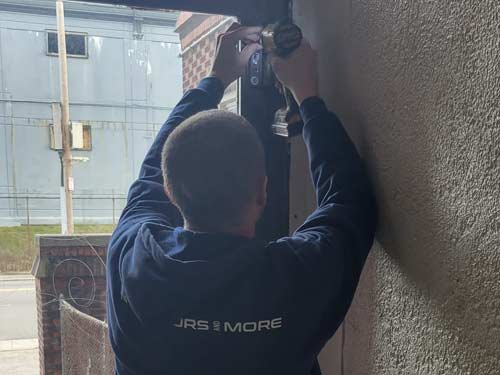Adjust the strike plate or tighten the hinges to fix a door that won’t latch. Check for misalignment and correct it.
Dealing with a door that won’t latch can be frustrating. This common issue often arises from simple misalignments or loose hardware. Over time, everyday use can cause the door and its components to shift slightly, preventing the latch from catching properly.
Addressing this problem usually involves straightforward adjustments that most homeowners can handle with basic tools. By understanding the potential causes and solutions, you can restore your door’s functionality and security. Whether it’s realigning the strike plate or tightening the hinges, these quick fixes can save you the hassle and cost of professional repairs.

Credit: structuretech.com
Common Causes
When a door won’t latch, it can be frustrating. Several common causes can lead to this issue. Let’s explore these reasons to help you fix the problem.
Misaligned Strike Plate
A misaligned strike plate can prevent a door from latching. The strike plate is the metal piece attached to the door frame.
Check if the strike plate lines up with the door latch. If not, you may need to adjust it. Use a screwdriver to loosen the screws on the strike plate.
Move the strike plate up, down, left, or right. Tighten the screws again and test the door. If the door still doesn’t latch, you might need to enlarge the hole in the frame.
Sometimes, a small amount of wood filler can help. Apply it to the screw holes if they are too big. This can ensure a tighter fit for the strike plate.
Loose Hinges
Loose hinges can cause a door to sag. This misalignment can stop the door from latching properly. Check the hinges for any loose screws.
Tighten the screws with a screwdriver. If the screws are stripped, replace them with longer ones. This will provide a more secure hold.
Sometimes, the hinge screws might be too short. In this case, replace them with longer screws. This will help the door stay in place.
If the door still won’t latch, you might need to remove the door. Check the hinge mortises for damage. Repair any damage with wood filler and allow it to dry before reattaching the door.
| Cause | Solution |
|---|---|
| Misaligned Strike Plate | Adjust or move the strike plate |
| Loose Hinges | Tighten or replace hinge screws |
By addressing these common causes, you can fix a door that won’t latch. Understanding the problem is the first step to resolving it.

Credit: www.familyhandyman.com
Essential Tools
To fix a door that won’t latch, you need some basic tools. These tools help you adjust or repair the door and its components. Let’s dive into the tools you’ll need.
Screwdrivers
Screwdrivers are crucial for tightening or loosening screws. You’ll need a Phillips head screwdriver and a flat-head screwdriver. These help adjust the door hinges and latch plate.
- Phillips head screwdriver: Fits screws with a cross-shaped slot.
- Flat-head screwdriver: Fits screws with a straight, narrow slot.
Using these screwdrivers, you can tighten loose screws or replace old screws. This ensures the door aligns properly with the latch.
Chisels
A chisel is useful for adjusting the door frame or latch plate. Sometimes, the latch plate needs a slight adjustment. A sharp chisel can trim wood around the latch area.
| Chisel Type | Usage |
|---|---|
| Bevel-edge chisel | For precise wood trimming |
| Mortise chisel | For deeper wood cuts |
By using the right chisel, you can make small adjustments. This helps the latch fit better and the door close properly.
Initial Inspection
Before jumping into fixing your door, start with an initial inspection. This step helps identify the root cause of the problem. A thorough inspection will guide you to the right solution.
Check Alignment
First, check if the door aligns properly with the frame. Close the door slowly and see if the latch lines up with the strike plate. If it’s off, you’ll need to adjust the door or the frame.
Use a level to ensure the door is hanging straight. If the door is tilted, it might be due to loose hinges or warped wood.
Examine Hardware
Next, inspect the door hardware. Look at the hinges, screws, and latch. Loose screws can cause misalignment. Tighten any loose screws with a screwdriver.
Check the strike plate as well. If it’s damaged or bent, it might be blocking the latch. Replace it if necessary.
Ensure the latch moves freely. If it’s stuck, apply some lubricant to the moving parts. This simple step can solve many latching issues.
Adjusting Hinges
Having a door that won’t latch can be frustrating. One common fix involves adjusting the hinges. This simple task can often solve the problem without much hassle.
Tightening Screws
If your door won’t latch, the first step is to check the screws. Loose screws can cause the door to sag. Use a screwdriver to tighten them.
- Open the door fully.
- Locate the screws on the hinges.
- Use a screwdriver to tighten each screw.
- Test the door to see if it latches properly.
If the screws are tight but the door still won’t latch, you may need to replace them. Worn screws can lose their grip over time.
Replacing Hinges
If tightening the screws doesn’t work, consider replacing the hinges. Worn or damaged hinges can prevent the door from latching.
- Remove the old hinges using a screwdriver.
- Purchase new hinges that match the old ones.
- Align the new hinges with the screw holes.
- Secure the new hinges with screws.
- Check if the door latches correctly.
Replacing hinges can be a bit more involved but can solve the issue effectively. A door that won’t latch can be a simple fix with the right steps.
Fixing Strike Plate
Is your door not latching properly? The problem might be with the strike plate. A strike plate is the metal piece on the door frame. It catches the latch bolt to keep the door closed. Fixing the strike plate can solve the issue.
Repositioning Plate
Sometimes, the strike plate is not aligned with the latch. This misalignment can prevent the door from latching. Follow these steps to reposition the plate:
- Open the door fully.
- Examine the strike plate and mark its current position.
- Unscrew the strike plate from the frame.
- Move the plate up or down slightly to align with the latch.
- Mark the new position and screw it back in.
Check if the door latches properly now. If not, you may need to enlarge the hole.
Enlarging Hole
If the latch bolt does not fit the hole, you need to enlarge it. Here’s how to do it:
- Open the door fully.
- Remove the strike plate from the frame.
- Use a chisel to enlarge the hole slightly.
- Sand the edges of the hole to smooth them.
- Reattach the strike plate.
Ensure the hole is large enough for the latch bolt. Test the door again to see if it latches properly.
Here is a quick comparison of the steps involved:
| Step | Repositioning Plate | Enlarging Hole |
|---|---|---|
| 1 | Open the door fully | Open the door fully |
| 2 | Mark current position | Remove strike plate |
| 3 | Unscrew strike plate | Chisel to enlarge hole |
| 4 | Move plate up or down | Sand edges |
| 5 | Screw it back in | Reattach strike plate |
By following these steps, you can fix the strike plate and ensure your door latches properly.
Door Frame Issues
Dealing with a door that won’t latch can be frustrating. Often, the problem lies in the door frame itself. Door frame issues can prevent the latch from properly engaging, causing the door to remain loose. Understanding and addressing these issues can help you fix the problem effectively.
Assessing Warping
Warping is a common issue with door frames. It occurs due to moisture or temperature changes. To check for warping, examine the frame closely. Look for any bends or twists.
- Use a level to check the frame’s alignment.
- Place the level vertically and horizontally on the frame.
- If the bubble isn’t centered, the frame is likely warped.
Another method is to close the door and inspect gaps. Gaps indicate misalignment caused by warping. Identify the exact location of the warp for precise repairs.
Repairing Frame
Once you’ve identified warping, you can repair the frame. Here’s a simple guide:
- Remove the door: Take off the hinges to access the frame.
- Sand the frame: Use sandpaper to smooth out warped areas.
- Reinforce with screws: Insert screws to straighten the frame.
- Check alignment: Use the level again to ensure the frame is straight.
- Reattach the door: Place the door back on the hinges.
In severe cases, you might need to replace the frame. Consult a professional if unsure about extensive repairs.
Addressing door frame issues can make your door latch properly. Regular maintenance can prevent future problems.
Lubrication Tips
A door that won’t latch can be frustrating. Often, the solution is simple. Proper lubrication can fix many issues. Let’s explore some easy lubrication tips.
Choosing Lubricant
Selecting the right lubricant is crucial. Here are some options to consider:
- Graphite Powder: Ideal for locks and hinges.
- Silicone Spray: Works well on metal and plastic parts.
- WD-40: Good for general purposes.
Each lubricant has its advantages. Choose based on the material and type of door.
Applying Properly
Proper application ensures effectiveness. Follow these steps:
- Clean the area: Remove dust and debris first.
- Apply lubricant: Use a small amount. Avoid over-application.
- Test the door: Open and close it to spread the lubricant.
Repeat the process if needed. Ensure the lubricant reaches all moving parts.

Credit: www.youtube.com
When To Call A Professional
Sometimes, fixing a door that won’t latch can be difficult. At these times, you may need to call a professional. Knowing when to call for help can save time and prevent damage.
Complex Issues
Some door problems are too complex for DIY fixes. These issues might include:
- Warped Door Frames: Warped frames can cause alignment issues.
- Structural Damage: Cracks or splits in the door or frame.
- Misaligned Strike Plates: Strike plates that don’t line up with the latch.
These problems need expert knowledge and skill. A professional can diagnose and repair these issues correctly.
Specialized Tools
Fixing some door issues requires specialized tools. Professionals have access to these tools. Here are some examples:
| Tool | Purpose |
|---|---|
| Bore Sighter | Aligns the door and frame |
| Planer | Smooths and adjusts door edges |
| Chisels | Resizes strike plates and mortises |
These tools help in making precise adjustments. A professional can use them to fix your door efficiently.
Frequently Asked Questions
Why Won’t My Door Latch Properly?
A door may not latch due to misalignment, loose hinges, or a warped door frame. Inspect each part for issues. Tighten screws and make necessary adjustments to align the latch with the strike plate.
How Can I Realign A Door Latch?
First, loosen the screws on the strike plate. Adjust the plate so it aligns with the latch. Retighten the screws. Test the door to ensure it latches properly.
What Tools Do I Need To Fix A Door Latch?
You will need a screwdriver, a chisel, and possibly a hammer. A drill might be useful for repositioning the strike plate or hinges.
Can Weather Affect Door Latching?
Yes, humidity and temperature changes can cause wood to expand or contract. This can misalign the door, preventing it from latching. Regular maintenance can mitigate these effects.
Conclusion
Fixing a door that won’t latch can be simple with the right tools. Follow our steps for a secure door. Regular maintenance prevents future issues. Ensure your door remains functional by addressing problems early. Happy fixing, and enjoy the peace of a properly latching door.

